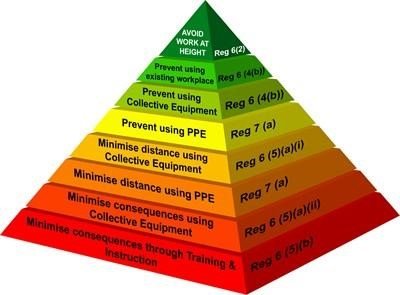Working at Height – What do you Need to Know?
Working at height employee using a safety ladder
As working at height experts, the Altus Safety team has seen health and safety on site take giant leaps forward over the past few years. The strict standards we follow in the UK have successfully helped manage risk and reduce the number of incidents and near misses.However, working at height remains one of the most significant workplace hazards and can be fatal if not done correctly. Consequently, it’s always worth getting a quick refresher on the best practices about working at height to ensure safety and the equipment work hand-in-hand with good safety behaviours.In this article, we provide you with everything you need to know about working at height – from the laws and regulations, the equipment you will need to obtain to work safely, and how the team here at Altus Safety can assist.
Working at Height Regulations 2005
In the UK, the requirements set out in this legislation are mandatory for anyone working at height or responsible for a programme of works that involve working at height. This includes any activity above ground floor level or in any location where someone could fall from an edge, or through an opening or a surface.In addition, the Working at Height Regulations (2005) includes a list of multiple regulations for safe working-at-height practice, including the necessary equipment such as fall arrest ladders, guardrail edge protection, and other fall protection systems, for example.As the company owner, it’s crucial to investigate which laws you must be following in line with the Working at Height Regulations (2005) and your industry. If you do not comply with the proper regulations, not only are you breaking the law and putting your business in danger, but you are opening your employees up to severe and potentially fatal danger.
Competent person overseeing the safety of working at height employees
Industries that Require Working at Height
Several industries could require you to work at height, and we work closely with people from all sectors to ensure that they are following the legal requirements for their individual work practices. For example, agriculture, forestry, and arboriculture will have different needs than construction, which will also differ from roof work.However, the Hierarchy of Control Measures: Working at Height stands regardless of the industry you work in.
Understanding the Hierarchy of Working at Height Specifications
It’s not always possible to avoid working at height. Still, the Hierarchy of Control Measures: Working at Height set out in the regulations for managing risk is designed to help you reduce the hazard level where possible and specify the most appropriate safety equipment for your site environment. The hierarchy can be summarised as:
If it is avoidable, do not work at height
If working at height is unavoidable, use powered access systems where possible
If powered access is not viable, install guardrail edge protection – this might include permanent free-standing guardrails, temporary handrails or collapsible handrails
If a guardrail is not suitable, install a fall restraint system that controls the work area away from the edge
If a restraint system is not practical, employ a fall arrest system that will limit the fall to prevent injury
For more information regarding the hierarchy, please visit our blog post in which we described and explained each layer in more detail. Additionally, we’re here to help and offer support and answer your questions – please feel free to get in touch with our team.
Hierarchy Altus Safety
Working at Height Equipment
There is a long list of working at height equipment that you can use to ensure your safety. We offer a great list of options here at Altus Safety, so please get in touch if you need some advice on which equipment is best for you. Some examples that you may require are:
Ladders such as caged ladders and companionway ladders.
Edge protection, which includes clamp rails and fixed, free-standing, and collapsible guardrails and handrails.
Roof walkway protection such as anti-slip, UPVC, and aluminium walkway protection.
Specialist Advice at Altus Safety
While an experienced contractor or maintenance professional will understand managing risk, it is best to work with a specialist provider that can advise you on the correct type of system to meet your needs. A trusted working-at-height partner will carry out a site survey to understand the specific nature of the risks involved and practical considerations such as spatial layout and substrates in order to recommend a best-fit specification. Here at Altus Safety, we can do this for you. We have an extensive list of services available for those working at height, such as fall protection installation, fall protection inspection, and working at height risk assessments. Additionally, we offer fall protection equipment, edge protection, and other safety equipment discussed above, so please feel free to explore our website to view a complete list of services and equipment to see what we can do for you. Altus Safety always sends a senior team member to assess your requirements and design the solution. So, if you’d like to talk to us about how we could help you make working at height safer, simply give us a call on 0330 113 0870.



